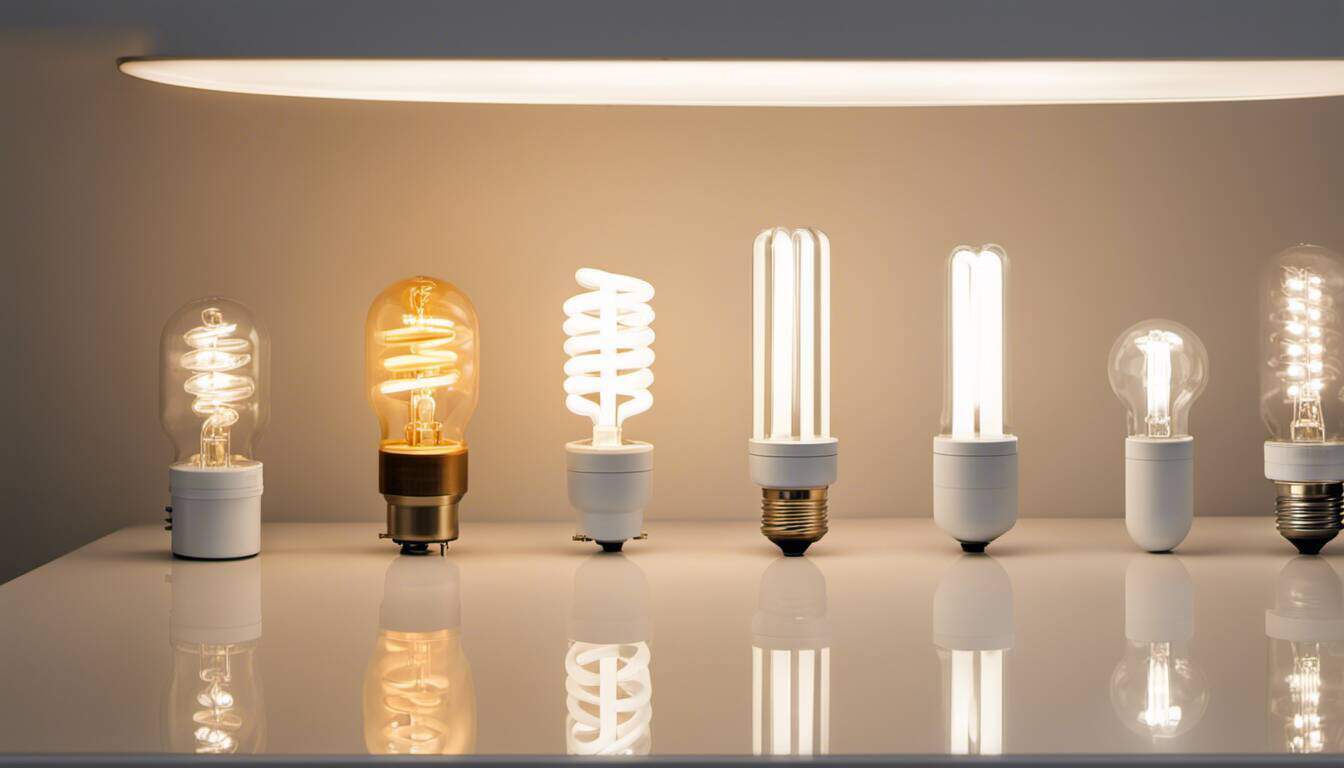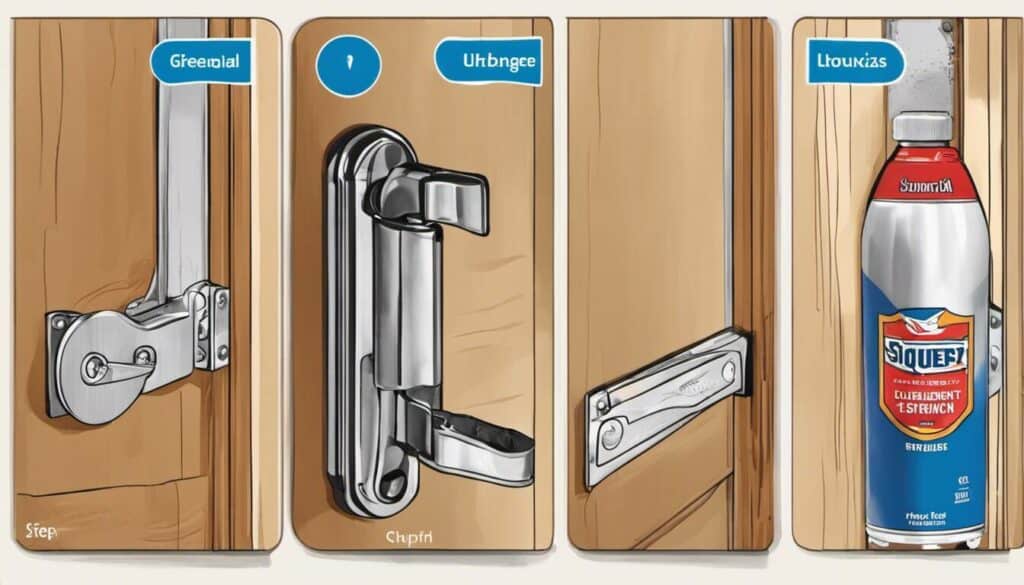In my search for the right lighting, I found myself torn between two contenders: Light Emitting Diodes (LEDs) and Compact Fluorescent Lights (CFLs). Standing in the lighting aisle, I wondered which bulb would best suit my needs. I explore which of these contenders would suit my personal needs, comparing their lifespan, efficiency, and environmental impact. Through this comparison, I aim to provide a clear understanding to help you make an informed decision for your home.
LED bulbs are generally more energy-efficient, longer-lasting, and more durable than CFL bulbs. They emit very little heat and come in a variety of shapes and colors. On the other hand, CFL bulbs are less expensive upfront but contain mercury, require proper disposal, and may not work well in cold temperatures. Ultimately, the decision between LED vs. CFL comes down to personal preference and intended usage.
“The decision between LED and CFL is not just about efficiency or output, but also about understanding the longevity, environmental impact, and costs associated. LEDs, known for their long lifespan, certainly have an upper hand when considering long-term usage. However, CFLs remain a reasonably efficient and cheaper option for shorter-term applications. It’s crucial not to oversimplify the decision, but consider the specific requirements of your lighting needs in relation to these parameters.”
Cedric Leopold, Optoelectronics Engineer
A Comparison of LED and CFL Bulbs
When it comes to energy-efficient lighting options, LED (Light Emitting Diode) and CFL (Compact Fluorescent Lamp) bulbs are two popular choices. Both offer significant advantages over traditional incandescent bulbs in terms of energy savings and longevity. However, there are some key differences between these technologies that consumers should be aware of before making a decision.
Let’s think of choosing the right bulb as selecting the perfect tool for a specific job. Just like you wouldn’t use a hammer for delicate precision work, understanding the characteristics of LED and CFL bulbs will help you choose the one that best suits your needs.
One crucial factor to consider is brightness and light quality. LED bulbs produce instant full brightness with no warm-up time, allowing you to have bright illumination immediately. On the other hand, CFL bulbs take up to 30 seconds to fully brighten. This delay can be noticeable and may not be ideal for areas where immediate illumination is required.
Another aspect to consider is the color temperature or light appearance. LED bulbs offer a wide range of color temperatures, from cool white to warm yellow, allowing you to customize the ambiance of your space. CFL bulbs tend to emit a cooler, bluish light, which may not be preferred by all individuals.
Furthermore, LED bulbs have a longer lifespan compared to CFLs. An LED bulb can last up to 50,000 hours, while a CFL bulb typically lasts around 8,000 hours. This means that LED bulbs would require less frequent replacement and result in long-term cost savings.
In terms of durability, LED bulbs have an advantage over CFLs. LEDs are more durable and resilient; they can withstand impacts and vibrations without breaking. On the contrary, CFLs are fragile and more prone to breakage if dropped or mishandled.
Now that we understand some of the differences between LED and CFL bulbs, let’s dive deeper into the technologies behind these energy-efficient lighting options.
- When choosing between LED and CFL bulbs, it is important to consider factors such as brightness, light quality, color temperature, lifespan, and durability. LEDs produce instant full brightness with customizable color temperatures and have a longer lifespan and greater durability than CFLs. Understanding these differences can help consumers make an informed decision that best fits their lighting needs.
Understanding LED and CFL Technologies
LED bulbs produce light when an electric current passes through a microchip, which illuminates tiny diodes within the bulb. These diodes emit different colors of light depending on the materials used. This technology allows LEDs to be highly efficient and consume less energy compared to traditional incandescent bulbs. LED bulbs use approximately 75% less energy, making them a greener choice for the environment and your electricity bill.
On the other hand, CFL bulbs operate differently. Inside a CFL bulb, an electric current is used to excite mercury vapor, producing ultraviolet light. The ultraviolet light then interacts with the phosphor coating inside the bulb, creating visible light. The use of mercury in CFLs is a concern for environmental reasons and requires proper disposal methods due to its toxic properties.
Both LED and CFL bulbs are measured in lumens, which is a unit that quantifies brightness. It’s essential to consider lumens rather than wattage when choosing the right bulb. For example, a 100-watt incandescent bulb may produce around 1600 lumens, while an equivalent LED or CFL bulb might only require 15-20 watts to produce the same brightness.
Suppose you have a room where you want to replace a traditional incandescent bulb with an equivalent energy-efficient option. By considering the lumens instead of wattage, you can choose an LED or CFL bulb that provides the desired brightness while using significantly less energy.
Brightness and Light Quality Differences
When it comes to the brightness and light quality, LED (light-emitting diode) bulbs and CFL (compact fluorescent lamp) bulbs have distinct characteristics. LED lights emit a crisp, bright light that closely resembles natural daylight. This makes them ideal for task lighting or areas where clarity is essential, such as kitchen countertops or workspaces. On the other hand, CFL lights tend to produce a softer, warmer light that is more similar to traditional incandescent bulbs. This warm light can create a cozy ambiance in living spaces or bedrooms.
The distinction in brightness and light quality between LEDs and CFLs is mainly due to their different mechanisms of generating light. LEDs produce light by passing an electric current through a semiconductor material, while CFLs use electricity to excite mercury vapor within the bulb, which then produces ultraviolet light that is converted into visible light by the phosphor coating on the inside of the bulb.
When choosing between these two options, consider the specific lighting needs of each space in your home or office. LED lights are often preferred in areas where clarity and visibility are crucial, whereas CFL lights are commonly used in spaces that require a soft and warm ambiance.
Energy Efficiency and Lifespan of LED and CFL Bulbs
Energy efficiency is a significant factor to consider when deciding between LED and CFL bulbs. Both types of bulbs are more energy-efficient than traditional incandescent bulbs; however, there are differences worth noting.
LED bulbs are highly energy-efficient. They consume significantly less energy than CFL bulbs for producing the same amount of brightness. Additionally, LED bulbs have an incredibly long lifespan, lasting anywhere from 25,000 to 35,000 hours. This extended lifespan means fewer replacements and reduced maintenance costs over time.
On the other hand, while CFL bulbs are also more efficient than incandescent bulbs, they consume slightly more energy compared to LED bulbs for the same brightness output. CFLs have an average lifespan of approximately 10,000 to 15,000 hours, which is about ten times longer than incandescent bulbs but shorter than LED bulbs.
To put it into perspective, let’s consider a scenario where both LED and CFL bulbs are used for 10,000 hours. The energy consumed by the LED bulb would be significantly lower compared to the CFL bulb, resulting in cost savings on energy bills. Moreover, the LED bulb would likely still have thousands of hours left before needing replacement, while the CFL bulb may have reached the end of its lifespan.
- Which is better between LED and CFL bulbs?
- Write 3 scientific statistics about “LED vs. CFL: A Bright Idea Showdown”:
- Lighting your home accounts for approximately 25% of your total electric bills, making the choice between LED and CFL significant.
- LED bulbs have a lifespan of up to 50,000 hours while CFL bulbs can only last for around 8,000 hours, which underlines the longer usability of LEDs over CFLs.
- In terms of energy consumption, LED bulbs use 75% less energy than incandescent ones, whereas CFLs use only 25-35% less energy – a stat that highlights the superior energy efficiency in LEDs.
Cost Implications over Time
When considering any investment, it’s essential to evaluate the long-term cost implications. LED and CFL lighting options differ in terms of upfront costs and energy efficiency. While CFL bulbs are generally cheaper to purchase initially, LED bulbs have a longer lifespan and consume significantly less energy. This means that even though LED bulbs may be more expensive upfront, they can lead to significant long-term savings in energy costs. Additionally, as technology advances, LED prices continue to decrease, making them a more affordable option over time.
Let’s illustrate this with an example. Suppose you have a room fitted with five 60-watt incandescent bulbs, which are replaced either with CFL or LED bulbs. Over the course of 10 years, assuming four hours of daily usage and an electricity cost of $0.12 per kWh, the cost breakdown would look like this:
- Using CFL bulbs:
- Initial cost: $15 (5 CFL bulbs at $3 each)
- Energy consumption: Approximately 46 watts (5 CFL bulbs at 9 watts each)
- Total energy cost over 10 years: $101.20
- Replacement bulbs needed: At least two replacements (estimated based on CFL bulb lifespan)
- Total cost over 10 years: $116.20
- Using LED bulbs:
- Initial cost: $25 (5 LED bulbs at $5 each)
- Energy consumption: Approximately 25 watts (5 LED bulbs at 5 watts each)
- Total energy cost over 10 years: $56
- Replacement bulbs needed: None (assuming LED bulb lifespan)
- Total cost over 10 years: $81
As we can see from this example, even though the upfront cost of LED bulbs is higher, the energy savings and longer lifespan result in overall lower costs over time.
Now that we’ve examined the cost implications of LED and CFL lighting, let’s explore the environmental impact of these lighting options.
The Environmental Impact of LED and CFL Lighting
In today’s world, where environmental sustainability is a pressing concern, it’s crucial to evaluate the impact our choices have on the planet. When it comes to lighting, both LED and CFL bulbs offer significant benefits compared to traditional incandescent bulbs.
Energy-saving bulbs such as CFLs and LEDs have gained popularity due to their lower energy consumption and longer lifespan. By consuming less energy, they reduce greenhouse gas emissions and contribute to overall energy conservation. This makes them a more environmentally friendly choice compared to traditional incandescent bulbs, which consume higher amounts of energy for the same level of lighting.
Furthermore, energy-saving bulbs have a reduced environmental impact throughout their lifecycle. They require fewer replacements due to their longer lifespan, resulting in fewer bulbs ending up in landfills. Additionally, modern energy-saving bulbs have improved significantly in terms of brightness and color temperature options, providing enhanced lighting experiences while reducing unnecessary waste.
Consider this: If every household in the United States replaced just one incandescent bulb with an LED bulb, it would save enough energy to power approximately 2.5 million homes for a year.
In addition to saving energy and reducing waste, LED and CFL lighting options also offer safety considerations that are important to understand.
Safety Considerations in LED and CFL Usage
When it comes to choosing lighting options for your home or workspace, safety should always be a top priority. Both LED (light-emitting diode) and CFL (compact fluorescent lamp) bulbs have their own set of safety considerations that should be taken into account.
LED bulbs, in general, are considered safer to use compared to CFL bulbs. This is primarily due to the fact that LEDs generate less heat during operation. As a result, they are much cooler to the touch and significantly reduce the risk of fire hazards and explosions. Additionally, LED bulbs do not contain hazardous materials like mercury, making them safer for both human health and the environment.
Let’s say you have young children who are curious and tend to touch objects around the house. Using LED bulbs would provide you with peace of mind knowing that they won’t burn themselves if they accidentally come into contact with the bulb.
On the other hand, CFL bulbs require some caution when handling and disposing of them. CFLs contain small amounts of mercury, which can be harmful if released into the air or water. Therefore, it’s important to take extra care if a CFL breaks to minimize any potential exposure. This includes properly ventilating the area, wearing gloves while cleaning up, and disposing of broken CFLs at designated recycling locations.
While the mercury content in CFLs is minimal and considered safe during normal usage, it is crucial to handle these bulbs with care throughout their lifespan. It’s also worth noting that advancements have been made in mercury reduction in newer models of CFL bulbs.
When comparing safety considerations between LED and CFL usage, LED bulbs clearly have an advantage due to their lower heat generation, absence of hazardous materials like mercury, and overall reduced risk of accidents or environmental harm.
In conclusion, whether you choose LED or CFL bulbs for your lighting needs, it’s essential to stay informed about the proper usage, handling, and disposal methods. Following safety guidelines and best practices will help ensure a safe lighting environment for you and your loved ones.






I completely transitioned my home to LED bulbs about four years ago, noticing an immediate reduction in my power bill. While the initial cost was slightly higher than CFLs, LEDs lasted over twice as long in my case, effectively saving money in the long run. Given their superior longevity and energy efficiency, LEDs have unquestionably outperformed CFLs in my experience.
It’s akin to choosing between a fuel-efficient hybrid vehicle or sticking with an old gas-guzzler – yes, the initial investment may seem steep for LED lights but the long-term benefits and savings are undeniable.
I’ve retrofitted my entire home with LED bulbs and not only do they provide a brighter luminescence but my power bill had considerably dropped in the following months.
As someone who frequently works with building lighting design, I’ve noticed that in long run, LEDs have proven much more cost-effective. Not only are they more energy-efficient, but also their longer lifespan means less frequent replacements, reducing waste and associated labor costs.
I second your opinion, Valeria. Even from a non-specialist perspective like mine, the benefits of LEDs are crystal clear. In my own home, I switched all our lights to LED bulbs about two years ago. The difference in electricity bill was remarkable and also knowing that I’m contributing less to electronic waste gives me peace of mind.